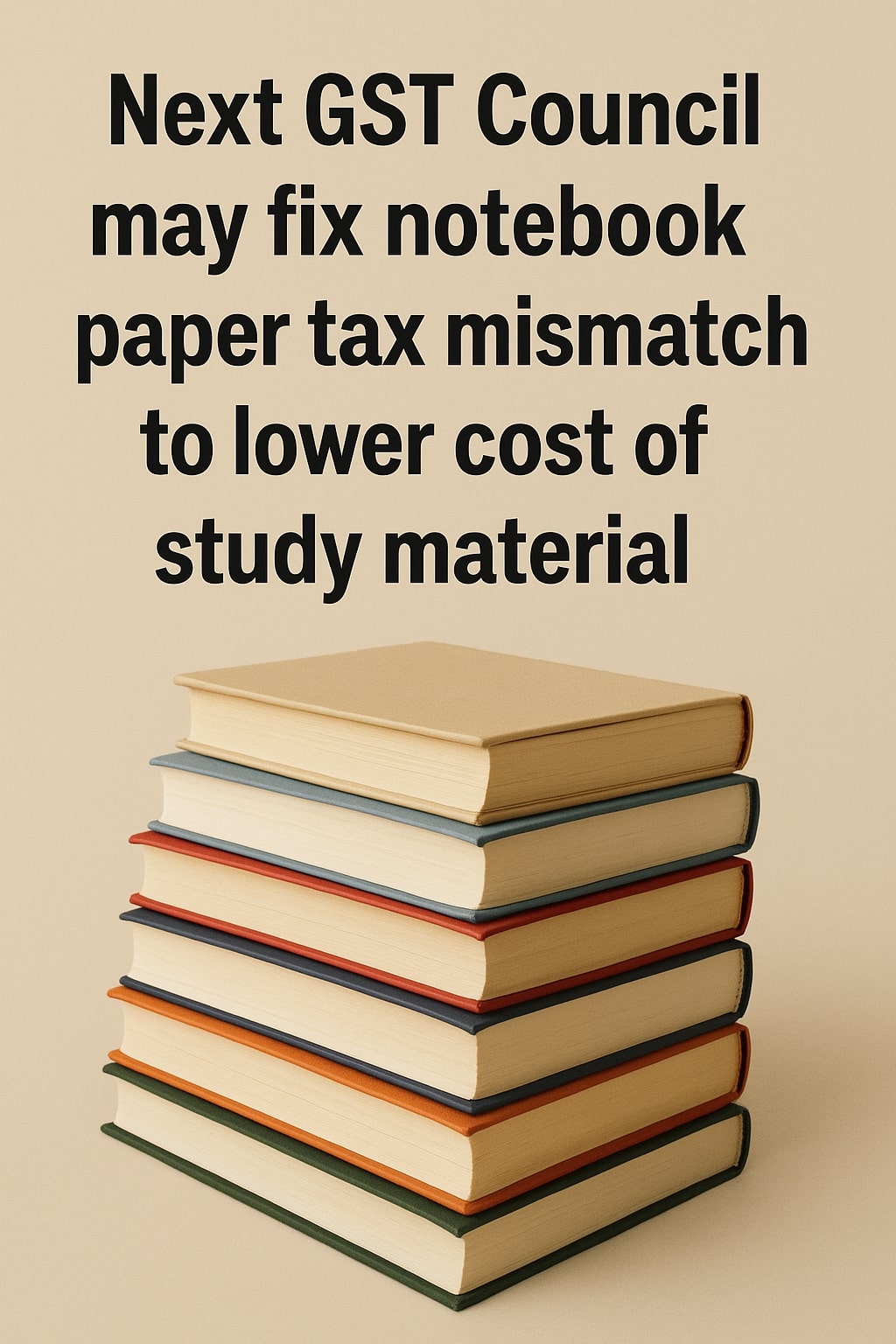
Notebook and textbook prices may remain high despite a zero Goods and Services Tax (GST) rate, as the paper used to manufacture them continues to attract 18 percent tax, creating a cost burden for publishers and consumers alike. This mismatch after ending the input tax credit for manufacturers has emerged as a classic case of inverted duty structure under the GST regime, which the government may address in the next council meeting.
“In the paper and notebooks rate, the anomaly has come to the notice. The next GST Council will correct this anomaly,” a senior government official told Moneycontrol, indicating the issue is on agenda for a review. The official added that the options under consideration include lowering GST on paper or alternatively, bringing notebooks into the 5 percent slab with input credit benefits. The next GST Council meeting is expected to be convened within the next three months.
Exempting notebooks from GST while maintaining a higher levy on their raw material leads to cascading taxes and erodes affordability. Unless corrected, the distortion could lead to sustained price increases, he said.
The Council’s recent rate rationalisation reduced slabs to 5 percent and 18 percent to simplify the GST design.
Sources indicated that rectifying the anomalies remains a key focus in the months ahead, with notebooks and paper likely to be among the first corrections to be taken up. Here is a quick FAQ on the issue:
Why are notebooks costlier despite zero GST?
Although notebooks are exempt from GST, the paper used to make them is taxed at 18 percent. Manufacturers cannot claim input tax credit on these inputs, which raises costs and pushes up final prices.
What is an inverted duty structure?
It arises when input materials attract a higher GST rate than the final product. This breaks the credit chain, leading to blocked input tax credits and higher costs for manufacturers and consumers.
What are the options before the GST Council?
The Council may consider either reducing GST on paper or shift notebooks into the 5 percent slab with input tax credit. Both measures would restore the credit chain and ease price pressures.
Has the Council addressed such anomalies in the past?
Yes. Inverted duty corrections have been made earlier as it impacts affordability and competitiveness.
The GST Council, chaired by Finance Minister Nirmala Sitharaman, has undertaken substantial GST reforms earlier this month, along with rationalisation of rate slabs.